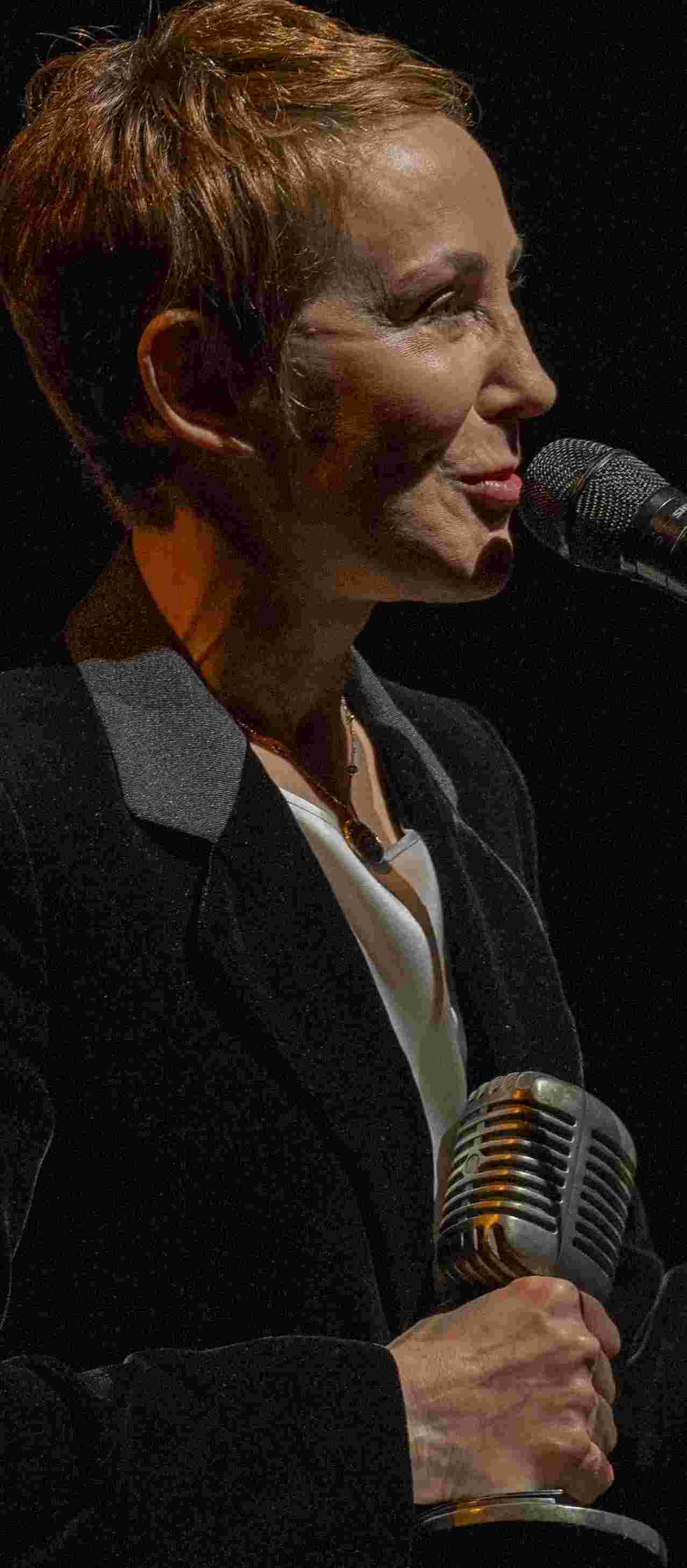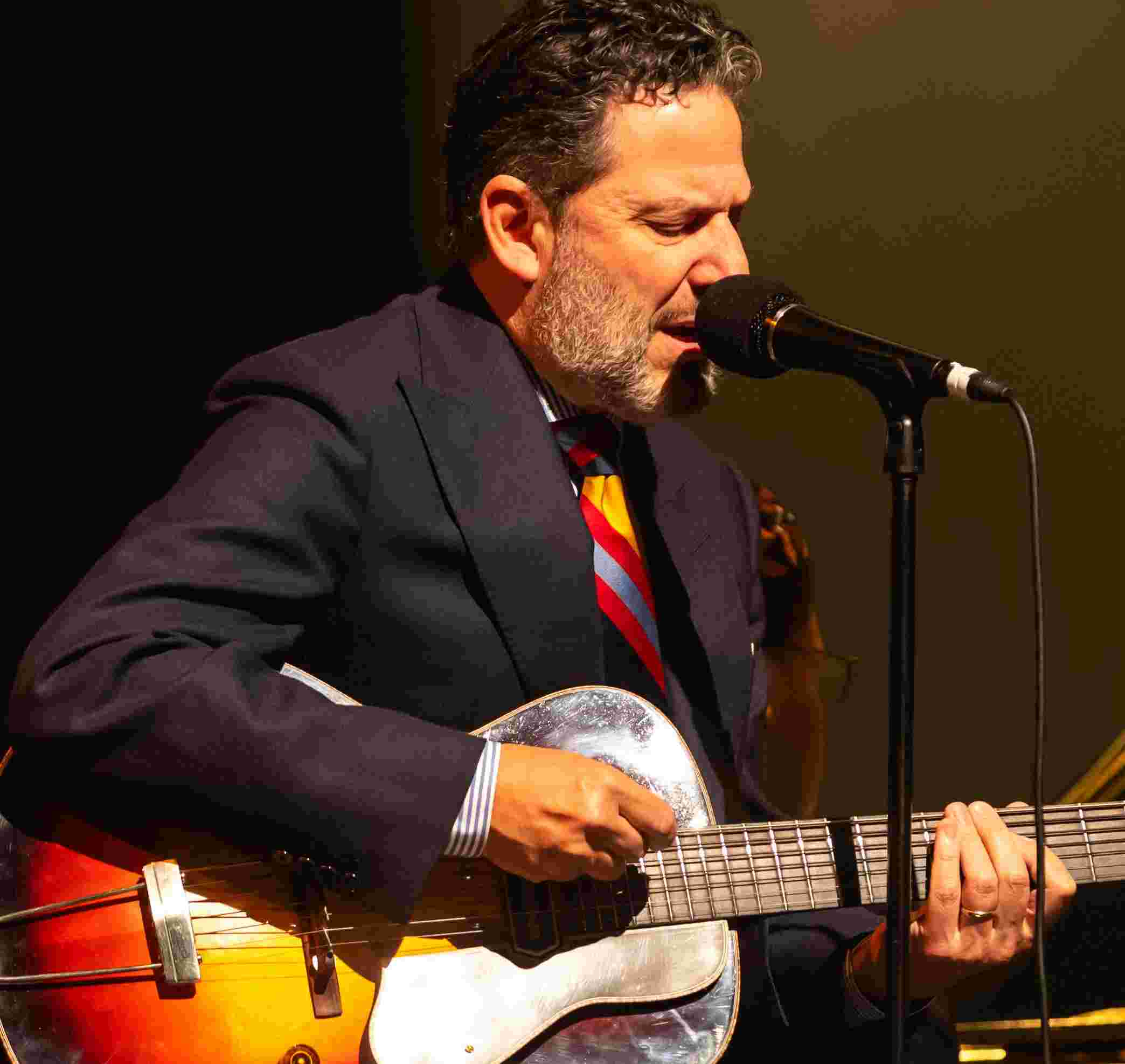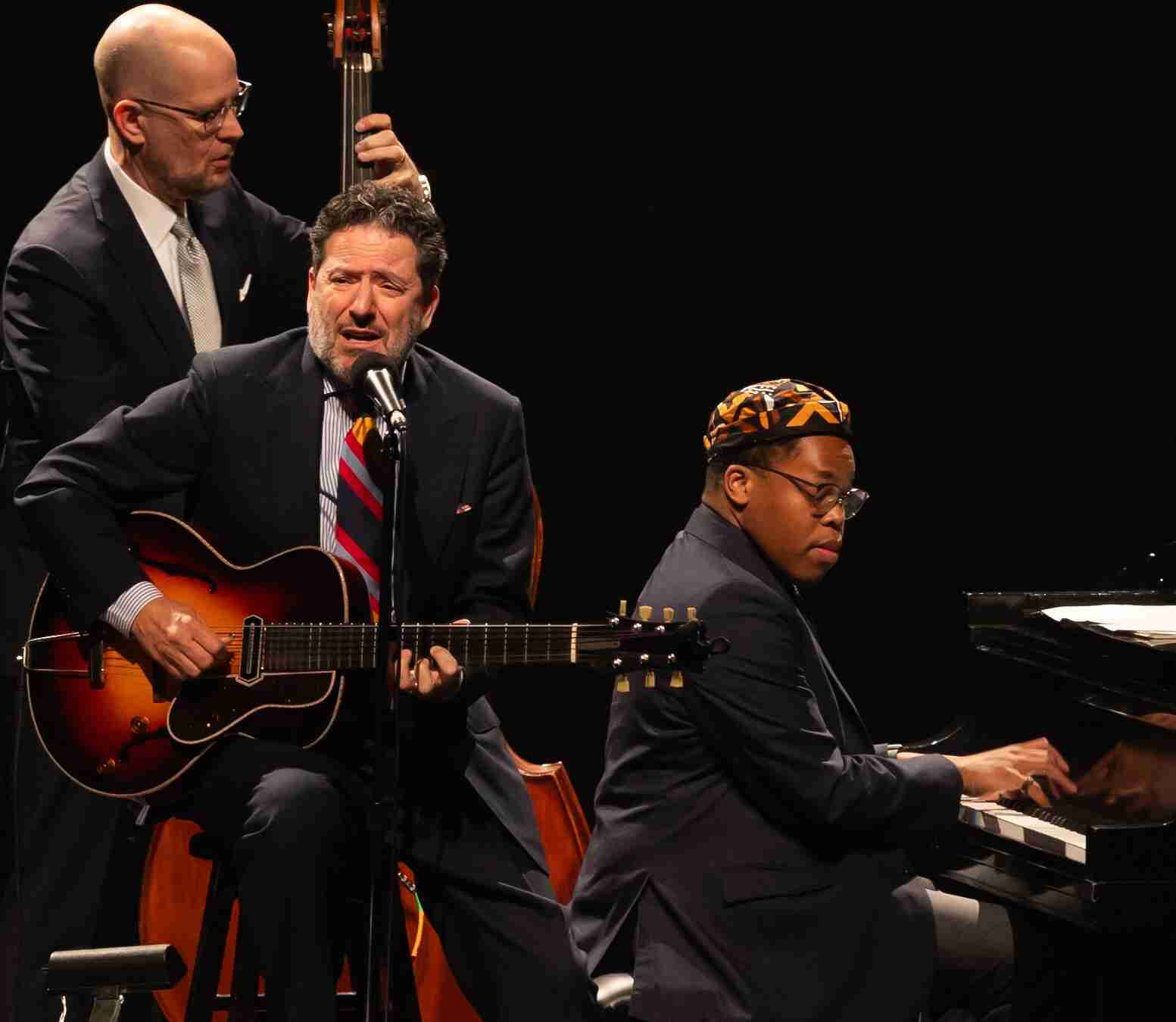For
the occasion of the 43rd edition of the 2023
Montreal International Jazz Festival
what was perhaps most notable in the Stacey Kent and John
Pizzarelli concerts was their decision to present their music
without percussion, which (in the spirit of full disclosure)
rendered me excessively disposed to their respective sets.
 They
remain two of the very best at what they do, and what they
do and have been doing for the past 30 years is precisely
what we have come to expect -- and they did not disappoint,
even though there were no surprises or knockouts, unless the
discovery of Pizzarelli's new pianist, Isaiah J. Thompson,
is what we will remember from what was a thoroughly enjoyable
evenings of music. Still in his 20s, Isaiah
Thompson has already performed with the likes
of Ron Carter and award winning singer Cécile McLorin
Salvant, and is a star on the rise.
They
remain two of the very best at what they do, and what they
do and have been doing for the past 30 years is precisely
what we have come to expect -- and they did not disappoint,
even though there were no surprises or knockouts, unless the
discovery of Pizzarelli's new pianist, Isaiah J. Thompson,
is what we will remember from what was a thoroughly enjoyable
evenings of music. Still in his 20s, Isaiah
Thompson has already performed with the likes
of Ron Carter and award winning singer Cécile McLorin
Salvant, and is a star on the rise. 
What
he brings to the ivories is impeccable technique and limpidity
and he's not afraid to inject unconventional harmonics into
music -- the standards – that does well without them,
while his flawless flourishes recall Oscar Peterson. Pizzarelli
generously provided his pianist lots of space not so much
show off but to showcase a readiness to subordinate his dexterity
in service of the music, and to pay implicit homage to two
of his major influences: Art Tatum and Errol Garner.
Having
seen Pizzarelli on several occasions, his jazz festival concert
featured more improvisation than usual, which meant we heard
less of the wonderfully easy and breezy voice that is synonymous
with the singer. One of the distinguishing features of the
great singers is staying within themselves, understanding
what their voices can do and just as importantly, not do,
which is why we’ve never heard John belt out a tune.
If his soloing isn’t as compelling as his mellifluous
vocalese, it is precisely structured and concise (code for
not extended indefinitely). Assuming the audience always gets
what it wants (thus spake the dollar), Pizzarelli will be
back in Montreal next year.

To
return to the question the Kent and Pizzarelli concerts ask:
why did they both decide a drummer was unnecessary, that the
music they played was better without?
As
a relevant aside or adjunct, I must mention that the last
time I saw a Willie Nelson concert (on TV), he allowed his
drummer one snare drum, and that was it. As far as I know,
Kent has never used a drummer and Pizzarelli only on occasion.
Of
course asking a drummer to be seen and not heard is an impossible
ask, but it cannot be a coincidence that the three musicians
mentioned above are in the latter stages of their careers,
have heard it all, and have decided that percussion can be
dispensed with.
By my admittedly jaundiced ear, drummers are either too loud
or too busy or, as often the case, too much of both. I dare
suggest that drummers more than any other musician have yet
to discover that you say more when you say less, that silence,
or the caesura, is the most important note in music just as
0 is the most important number in mathematics. Some of the
most tasteful drumming I've heard in my life is found in a
genre that I can't listen to for more than five minutes. Reggae
percussionists, for whom virtuosity has never been a temptation,
intuitively grasp that music is only as rich as the dimensions
or acoustic space it opens up. This is achieved using accents
and counterpoint, and only rarely via a deluge of sound that
is barely distinguishable from sheets of metal crashing on
a marble floor: when symbol is overwhelmed by cymbal and the
assaulted ear has nowhere to hide.
I've
now seen Stacy Kent on four occasions. After the third, I
said never again. She speaks an adorable French and loves
to show it off, and to such an extent that 25% of her concert
time consists of vaunting her second language skills. But
for her 9th appearance at the Montreal jazz Festival where
she was awarded the Ella Fitzgerald prize, it was less about
language and more about the music, mostly the standards, which
is what audiences come to hear from one of the great jazz
singers of the era. She was hugely helped by her wonderfully
lyrical pianist Art Hirahara and her husband Jim Tomlinson
on the sax. The latter, who scores the music and fills in
between the lyrics, has been at her side right from the beginning.
And while both Tomlinson and Hirahara are not the most inventive
or daring musicians, it's hard to imagine more tasteful accompaniment
in service of the music. One would never guess that Hirahara
is a serious student of avant-garde and electronic music.
As
for Stacey, it all centers on her one-of-a-kind voice -- an
odd admixture of small and rich (think of Sarah Vaughn performing
Sondheim's "Send in the Clowns" and the emphasis
on the word 'rich.'). It's the kind of voice that wraps itself
around your leg like a cat craving affection. It is so seductive
the ear can't get enough of it. It’s the voice you want
to take with you when you crawl into bed after a long day.
And to those pseudo-psychologists out there, yes, I suffer
from Jim Tomlinson envy. As for the many highlights from her
new album, Songs from Other Places, my personal favourite
was Antônio Carlos Jobim's "Bonita:"
both piano and sax accompaniment were exquisite.
Notwithstanding
Kent’s love and familiarity with the French language,
and that she was performing in the French city of Montreal,
she inexplicably decided to sing Jacques Brel’s classic,
"Ne Me Quitte Pas" in English (the translation of
which reduced the impact of the lyrics by at least 50%). But
despite that 4-minute faux-pas – a reminder
that we are living in "half the perfect world" --
by concert’s end there was no doubt that Stacey Kent
gave us much more than half that world, and I count among
the many who can't wait to hear her again. She reminds us
that jazz can be great without percussion, that the beat goes
on without it.
If
you love the standards, Montreal’s Jazz Festival hosted
two of the very best, and like a red wine that gets better
with age Stacey and John are still very much at the top of
their game in respect to finding new ways to say what has
been said on hundreds of occasions.
Here’s
looking at the both of you in 2024.